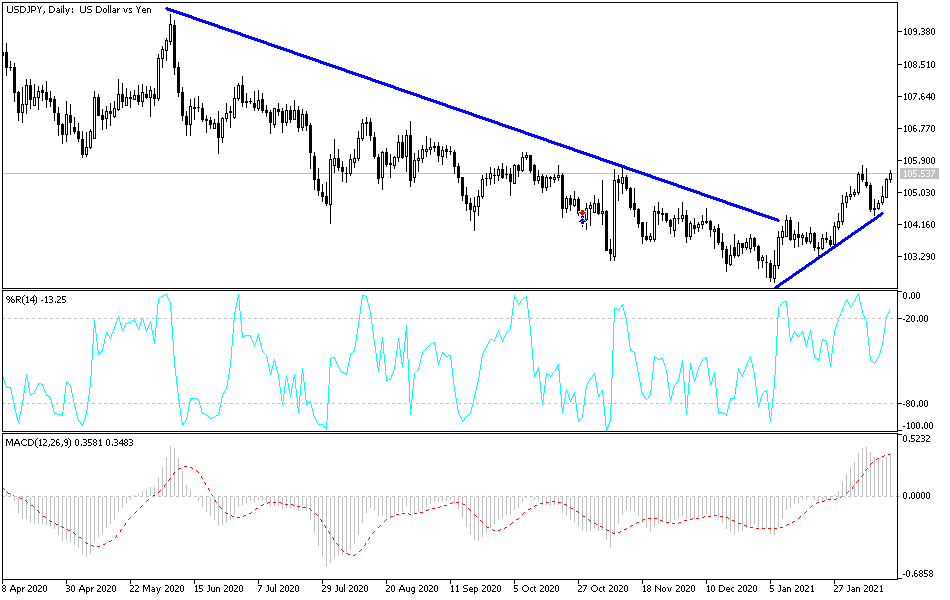For five trading sessions in a row, the USD/JPY has been moving in a new upward correction range, resulting in stability around the 105.63 resistance level as of this writing. The Japanese currency weakened significantly against other major currencies in light of the risk appetite situation. The US dollar is awaiting the market’s reaction to the retail sales figures this week, as well as the number of unemployment claims, the content of the minutes of the last meeting of the Federal Reserve, and any new issues regarding the passage of emergency economic stimulus plans by the US administration.
The World Health Organization has granted an emergency permit for the coronavirus vaccine provided by AstraZeneca and the University of Oxford, a move that would allow the company's partners to ship millions of doses to countries around the world as part of a UN-backed program to combat the pandemic.
For its part, the United Nations Health Agency said in a statement yesterday that it has permitted AstraZeneca vaccines, which are manufactured by the India Serum Institute and the South Korean company AstraZeneca-SKBio. Therefore, the WHO green light to obtain the AstraZeneca vaccine should lead to the delivery of hundreds of millions of doses to countries that have participated in the UN-supported COVAX efforts aimed at delivering vaccines to the world's most vulnerable groups.
Although the World Health Organization does not approve or regulate vaccines, it is assessing their safety and effectiveness in developing countries that do not have a strong regulatory system.
A senior American epidemiologist said that the Center for Disease Control and Prevention guidelines for reopening schools during the coronavirus pandemic are sufficient, but that schools will face significant challenges in the coming weeks due to virus variants. Michael Osterholm is chair of the University of Minnesota Center for Infectious Disease Research and Policy and was assigned to Joe Biden's coronavirus task force before Biden became president. Osterholm says the rate of virus transmission is low in schools, especially for younger students, but that the virus variants are a "true red flag down the road."
Osterholm told CBS that he believes that a type of virus from the UK in particular will lead to such an increase in the number of cases in the US over the next 14 weeks.
Japan's gross domestic product (GDP) saw a seasonally adjusted 3.0% growth on a quarterly basis in the fourth quarter of 2020, exceeding expectations of a 2.3% increase after a 5.3% increase in the previous three months. On an annual basis, GDP rose by 12.7%, once again exceeding expectations of a gain of 9.5% after rising by 22.9% in the previous three months.
The GDP Price Index rose 0.2% year-on-year after gaining 1.2% in the previous three months. Private consumption increased by 2.2% on a quarterly basis, exceeding expectations of 1.8% and down from 5.1% in the previous three months. Domestic demand increased by 8.1% on a quarterly basis, including an increase of 8.4% in private demand and 7.3% in public demand. On an annual basis, domestic demand decreased by 1.2%, including a 2.4% decrease in private demand and a 1.2% increase in public demand.
Technical analysis of the pair:
According to the performance on the daily chart, the USD/JPY formed an opposing bullish channel now, and still needs to breach the resistance 106.00 for a strong move higher. So far, the pair is still at the beginning of breaking the sharp bearish trend. The performance will turn bearish if the pair moves below the support level of 104.00. I expect quiet movements for the pair today as well, until the reaction from the economic data and important events that will be issued during the rest of the week.


